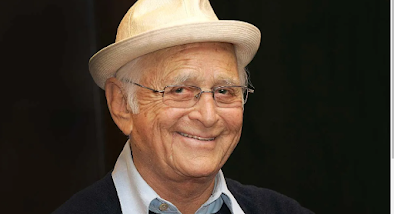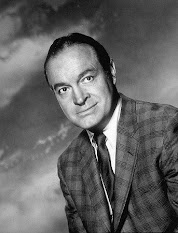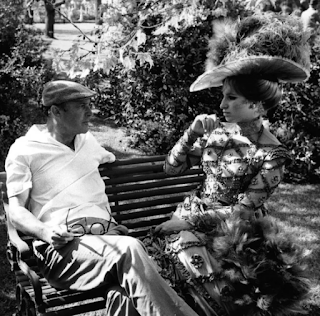Another year has passed. Another year of losing wonderful entertainers that made our world a brighter place. Here is a look at some of the wonderful people we have lost in 2023. It is not a complete list, but it is a highlight of some of the amazing people that are no longer with us...
 |
| Norman Lear |
Television icon NORMAN LEAR, died at the age of 101 on December 5th. He was a screenwriter and producer who produced, wrote, created or developed over 100 shows.Lear was known for creating and producing numerous popular 1970s sitcoms, including All in the Family (1971–1979), Maude (1972–1978), Sanford and Son (1972–1977), One Day at a Time (1975–1984), The Jeffersons (1975–1985), and Good Times (1974–1979). During his later years, he had continued to actively produce television, including the 2017 remake of One Day at a Time and the Netflix revival of Good Times in 2022. Lear received many awards, including six Primetime Emmys, two Peabody Awards, the National Medal of Arts in 1999, the Kennedy Center Honors in 2017, and the Golden Globe Carol Burnett Award in 2021. Lear is spotlighted in the 2016 documentary Norman Lear: Just Another Version of You. On July 29, 2019, it was announced that Lear had teamed with Lin-Manuel Miranda to make an American Masters documentary about Rita Moreno's life, tentatively titled Rita Moreno: Just a Girl Who Decided to Go for It. In 2020, it was announced that Lear and Act III Productions would executive produce a revival of Who's The Boss? Norman Lear worked until the end.
Singer LISA MARIE PRESLEY, died of a cardiac arrest on January 12th at the age of 54. She was the only child of singer and actor Elvis Presley and actress Priscilla Presley, as well as the sole heir to her father's estate. Presley developed a career in the music business and issued three albums: To Whom It May Concern in 2003, Now What in 2005, and Storm & Grace in 2012. Her first album reached Gold certification with the Recording Industry Association of America. Presley also released non-album singles, including duets with her father using tracks he had released before he died.
Singer, DON WILLIAMS, died at the age of 100 on January 6th. He was the last surviving member of The Williams Singing Group, which also included famous brother Andy Williams. The brothers scored a huge hit in 1944 singing with Bing Crosby on the Decca recording of "Swinging On A Star" The brothers subsequently split their band, but reunited annually – from 1962 until 1990 – for The Andy Williams Christmas Special.
Actress GINA LOLLOBRIGIDA, died on January 16th at the age of 95. She not only was a popular international actress, first catching the eye of Howard Hughes, but she was a photojournalist, and a politician. She was one of the highest-profile European actresses of the 1950s and early 1960s, a period in which she was an international sex symbol. At the time of her death, she was among the last high-profile international actors from the Golden Age of Hollywood cinema.Actor and bandleader LES BROWN JR. passed away on January 9th at the age of 82. He acted on various TV shows in the 1960s and 1970s, but he is more widely known as the son of bandleader Les Brown. When Les Brown died in 2001, Les Jr took over the band and ran it for the next 20 years until covid curtailed most big band activities.
 |
| Tony Bennett |
Singer TONY BENNETT died at the age of 96 on July 21st. He had many accolades, including 20 Grammy Awards, a Lifetime Achievement Award, and two Primetime Emmy Awards. Bennett was named an NEA Jazz Master and a Kennedy Center Honoree and founded the Frank Sinatra School of the Arts in Astoria, Queens, New York. He sold more than 50 million records worldwide. His first hit was "Because Of You" in 1952 for Columbia, and his other mega hits included "Rags To Riches" in 1953 and "I Left My Heart In San Francisco" in 1962. He struggled with drugs and a faltering career in the 1970s, but he made a comeback in the 1990s. In 2016, Tony was diagnosed with Alzheimer's Disease, and he made his last record, a duet album with Lady Gaga called "Love For Sale" in 2021. He retired from performing on August 5, 2021. In announcing Bennett's retirement in August 2021, son Danny Bennett stated that the Alzheimer's was mainly affecting his father's short-term memory and that he would often forget he had just performed after a concert; his long-term memory remained intact and he could still fully remember all the lyrics to his repertoire when performing.
Actress MELINDA DILLON, died at the age of 83 on January 9th. She received a 1963 Tony Award nomination for her Broadway debut in the original production of Who's Afraid of Virginia Woolf?, and she was nominated for the Academy Award for Best Supporting Actress for her roles as Jillian Guiler in Close Encounters of the Third Kind (1977) and Teresa Perrone in Absence of Malice (1981). She is well known for her role as Mother Parker in the holiday classic A Christmas Story (1983). Her other film roles include: Harry and the Hendersons (1987), The Prince of Tides (1991), and Magnolia (1999). She retired from acting in 2007.
Actress STELLA STEVENS, died of Alzheimer's Disease on February 17th at the age of 84. She was a popular actress of the 1960s and 1970s who began her acting career in 1959 and starred in such popular films as Girls! Girls! Girls! (1962), The Nutty Professor (1963), The Courtship of Eddie's Father (1963), The Silencers (1966), Where Angels Go, Trouble Follows (1968), The Ballad of Cable Hogue (1970), and The Poseidon Adventure (1972). Her last movie was made in 2010.
Singer TINA TURNER, died on May 24th at the age of 83. Tina was] Known as the "Queen of Rock 'n' Roll", she rose to prominence as the lead singer of the Ike & Tina Turner Revue before launching a successful career as a solo performer. Despite suffering from health problems for years like stroke and heart ailments, she continued to record through this year.Composer BURT BACHARACH, died at the age of 94 on February 8th. He was an American composer, songwriter, record producer, and pianist who composed hundreds of pop songs from the late 1950s through the 1980s, many in collaboration with lyricist Hal David. A six-time Grammy Award winner and three-time Academy Award winner, Bacharach's songs have been recorded by more than 1,000 different artists. Songs that he co-wrote which have topped the Billboard Hot 100 include "This Guy's in Love with You" (1968), "Raindrops Keep Fallin' on My Head" (1969), "(They Long to Be) Close to You" (1970), "Arthur's Theme (Best That You Can Do)" (1981), and "That's What Friends Are For" (1986).
 |
| Harry Belafonte |
Activsit and entertainer HARRY BELAFONTE, died on April 25th at the age of 96. Belafonte was best known for his recordings of "The Banana Boat Song", with its signature "Day-O" lyric, "Jump in the Line (Shake, Senora)", "Jamaica Farewell", and "Mary's Boy Child". He recorded and performed in many genres, including blues, folk, gospel, show tunes, and American standards. He also starred in several films, including Carmen Jones (1954), Island in the Sun (1957), and Odds Against Tomorrow (1959). Belafonte considered the actor, singer, and activist Paul Robeson a mentor, and he was a close confidant of Martin Luther King Jr. during the Civil Rights Movement of the 1950s and 1960s. Throughout his career, Belafonte was an advocate for political and humanitarian causes, such as the Anti-Apartheid Movement and USA for Africa. From 1987 until his death, he was a UNICEF Goodwill Ambassador. He made his last recordings in 2017, and his last movie in 2018.
Actress RAQUEL WELCH, died of heart failure and Alzheimer's Disease on February 15th at the age of 82. Welch first won attention for her role in Fantastic Voyage (1966), after which she won a contract with 20th Century Fox. They lent her contract to the British studio Hammer Film Productions, for whom she made One Million Years B.C. (1966). Although Welch had only three lines of dialogue in the film, images of her in the doe-skin bikini became bestselling posters that turned her into an international sex symbol. She later starred in Bedazzled (1967), Bandolero! (1968), 100 Rifles (1969), Myra Breckinridge (1970), Hannie Caulder (1971), Kansas City Bomber (1972), The Last of Sheila (1973), The Wild Party (1975), and Mother, Jugs & Speed (1976). Her final film was How to Be a Latin Lover (2017).
Singer and actor ED AMES, died at the age of 95 on May 21st. He is known for playing Mingo in the television series Daniel Boone, and for his pop number #1 hits of the mid-to-late 1960s including "My Cup Runneth Over", "Time,Time", and "When the Snow Is on the Roses". He was also part of the popular 1950s singing group with his siblings, the Ames Brothers. |
| Paul Reubens |
 |
| Glenda Jackson |
















































